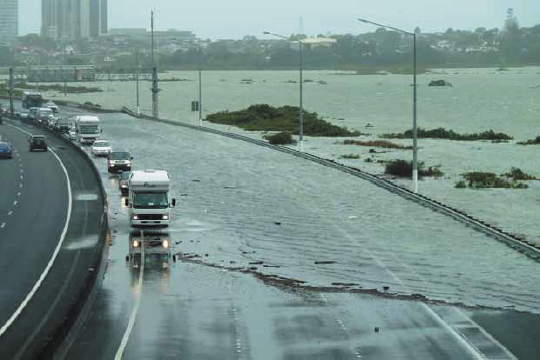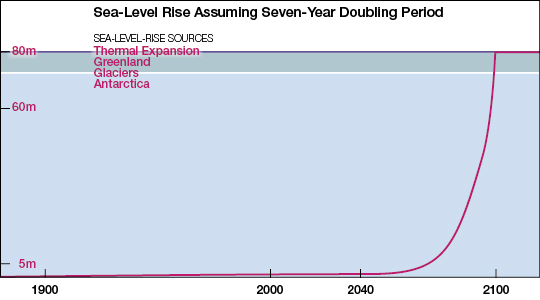Global warming gets chapter to itself

Draft Plan Understatement: In the chapter titled Auckland’s Response to Climate Change, this 23 January 2011 event when storm surge, sea level rise and a spring tide combined to put the southbound lanes of the Northern Motorway underwater is captioned ‘Severe weather conditions in Auckland.’ image Draft Auckland Plan
It is all the royal commission recommended and more.
The recommendations made by the Royal Commission on Auckland Governance two and a half years ago, cite global warming, and sea level rise in particular, as a significant argument for a new, unified council:
The commission considers that these impacts of climate change on the coastal edge, and the effects they will have on many very valuable properties, call for strong and consistent control and management. The commission also believes that a consistent region-wide approach is needed. The governance changes that this commission recommends will enable this to occur. The commission acknowledges that territorial authorities currently recognise the threats arising from coastal erosion, but the commission is satisfied that a consistent region-wide approach is needed.
The sixth chapter of the 13-chapter Draft Auckland Plan released on Tuesday is titled Auckland’s Response to Climate Change. This fully vindicates the attention paid by the royal commission to the subject in its recommendations, which (excluding references) contain 36 instances of the phrase climate change.
But bizarrely, the chapter contains contested conservative projections concerning the single most important long-term global warming consequence for the Makaurau isthmus: Sea-level rise. The figures all too frequently quoted are those from the 2007 Intergovernmental Panel on Climate Change report, which included thermal expansion only—whereas the accelerating contribution of ice sheet melt will ultimately dwarf that from thermal expansion. Although the non-inclusion of ice sheet melt was clearly flagged—many subsequent reports address this deficiency—the majority of civic policy writers continue to quote the 2007 report, oblivious of the more recent science.

Point Eight or Eighty: A seven-year doubling time of ice sheet contribution to sea-level rise would see the maximum rise possible play out by the end of this century. chart Mahurangi Magazine
The Draft Auckland Plan figure of 0.8 metres is possibly derived from Vermeer and Rahmstorf’s (2009) revised 0.75–1.9 metres for the full range of the climate panel’s emissions scenarios. However, Hansen and Sato (2011) warn against such comforting projections:
Sea level rise, despite its potential importance, is one of the least well understood impacts of human-made climate change. The difficulty stems from the fact that ice sheet disintegration is a complex non-linear phenomenon that is inherently difficult to simulate, as well as from the absence of a good paleoclimate analogue for the rapidly increasing human-made climate forcing.
The paleoclimate record warns that multi-metre sea-level rise can take place within decades. If that wasn’t sufficiently sobering, humanity is hell-bent on experimenting with what happens when atmospheric greenhouse gas concentrations are pushed to a level far greater, far more quickly, than those that have occurred naturally.
And elsewhere in the draft plan, the council cosies up to the government’s proposed $1.65 billion greenhouse gas emissions –generating Pūhoi–Wellsford motorway…
Fortunately, this is the Draft Auckland Plan.
